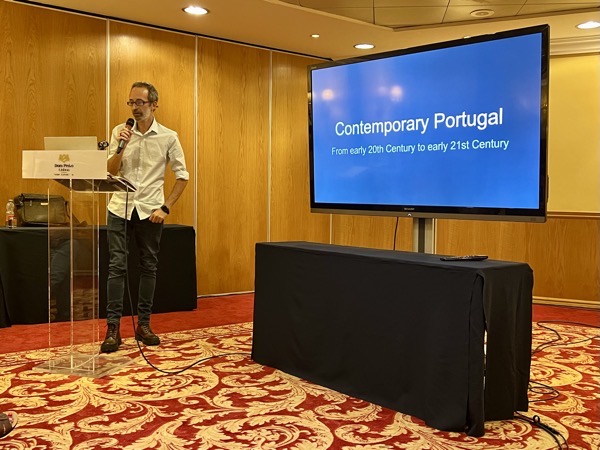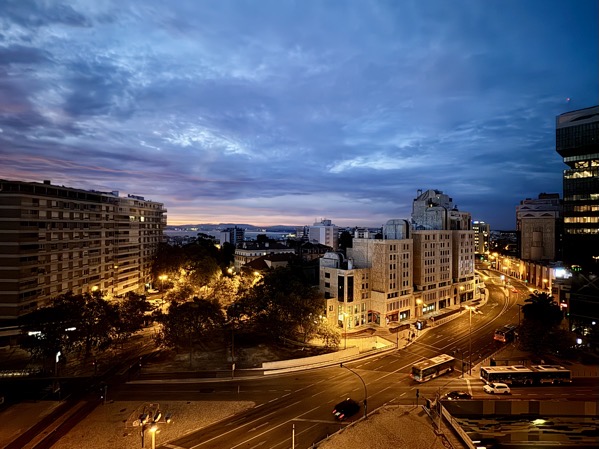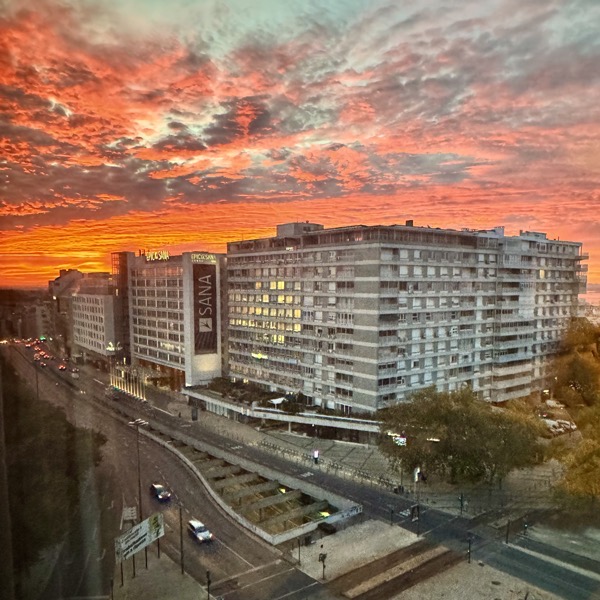Monday, September 30, 2024
After enjoying a hearty breakfast at the hotel buffet, we met up with John and Nancy, along with our fellow Smithsonian Journey adventurers, in the hotel lobby. We then boarded a large, modern tour bus parked alongside the hotel. Jane and I quickly claimed the front seat for the best views through the expansive windshield, making the most of our one chance to sit there, as it had been strongly recommended that our group rotate for that prime spot. We were treated to stunning views as we left the city traffic behind, cruising along country roads, passing through the popular resort town of Estoril, and eventually winding along a picturesque coastal road lined with beaches and resorts.
After less than an hour on the road, we arrived at the seaside resort of Cascais. Our tour guide led us from the bus parking lot to the bay, where a stunning sandy beach awaited, sharing insights into the town’s history along the way. We were then given free time to explore on our own and enjoy the charming surroundings.
Our foursome strolled along a plaza next to a pretty sandy beach before turning left, crossing the street, and walking along a sidewalk that ran parallel to the coastline. Along the way, we passed a life-sized statue of King Carlos I in naval attire, holding binoculars and a sextant to represent his maritime passions. On our right, we came upon the ramparts of the Citadel of Cascais, a historic complex built between the 15th and 17th centuries, which includes the Fortress of Nossa Senhora da Luz and the Cascais Tower. This segment of our walk ended with a nice view of the vast Cascais Marina. As I paused to admire the impressive collection of sailing vessels and reflect on my own brief nautical experiences, the other three members of our group turned back, eager to explore more of Cascais before our time ran out.
—— Cascais ——
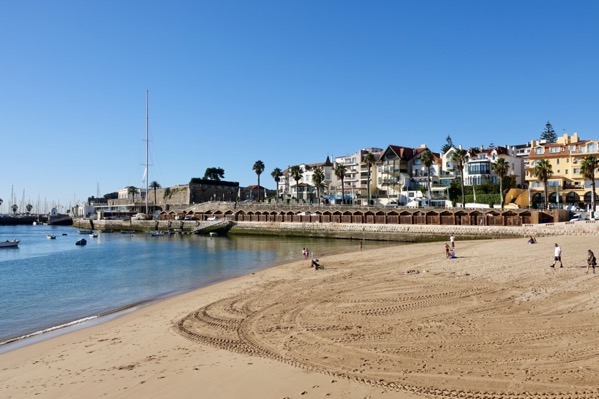
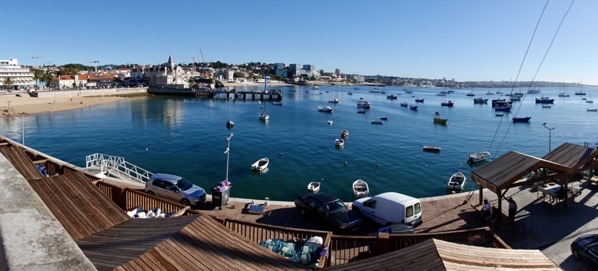
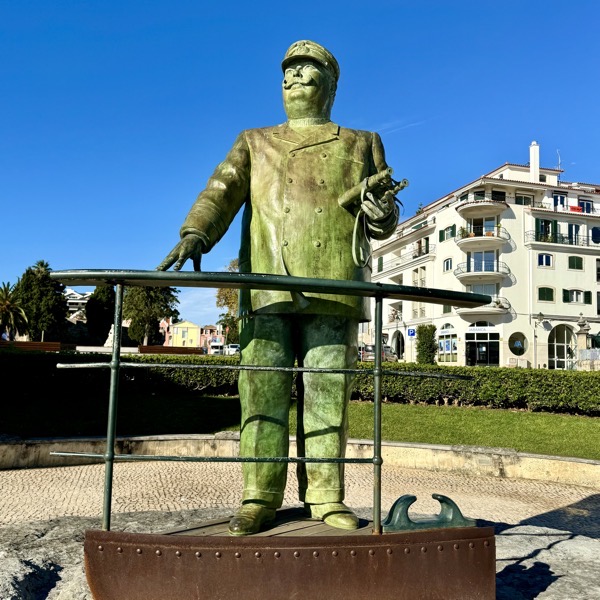

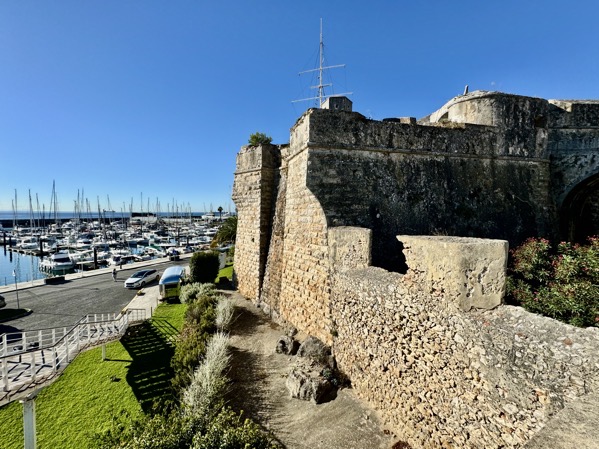

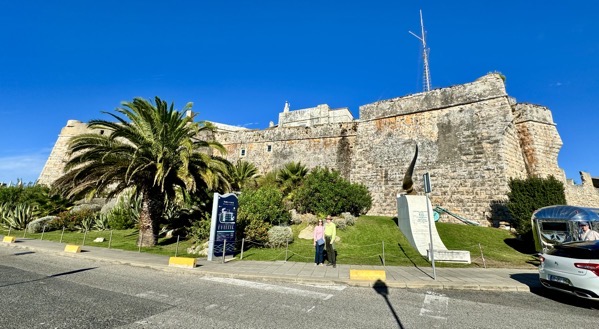
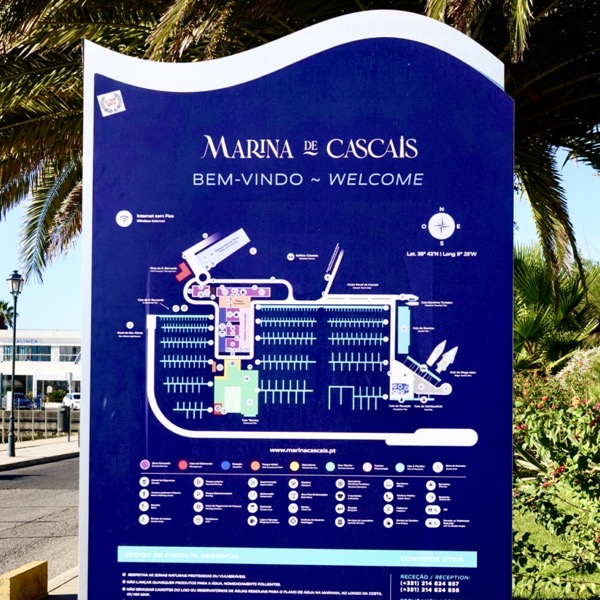

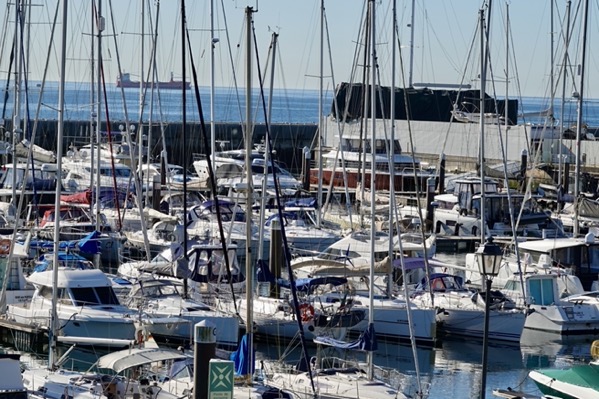
I retraced my steps alone and became captivated by a drove of kayakers who had invaded the beachfront bay. I continued past our starting point, savoring the coastal views, until I reached a commercial district with charming shops and narrow streets. There, I reunited with the other three members of our group, who had been browsing the shops. At the pharmacy, Jane had picked up a sought-after type of toothpaste, while John M. bought some cold medicine. Eventually, we made our way to the designated meeting spot and reboarded the tour bus.
—— More Cascais ——


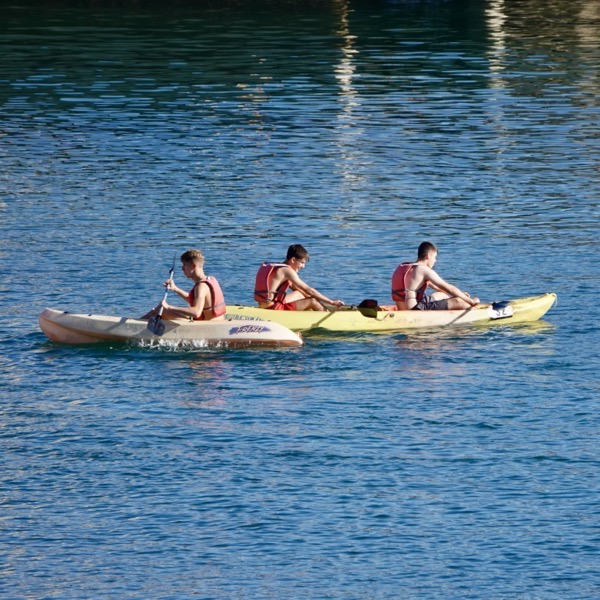
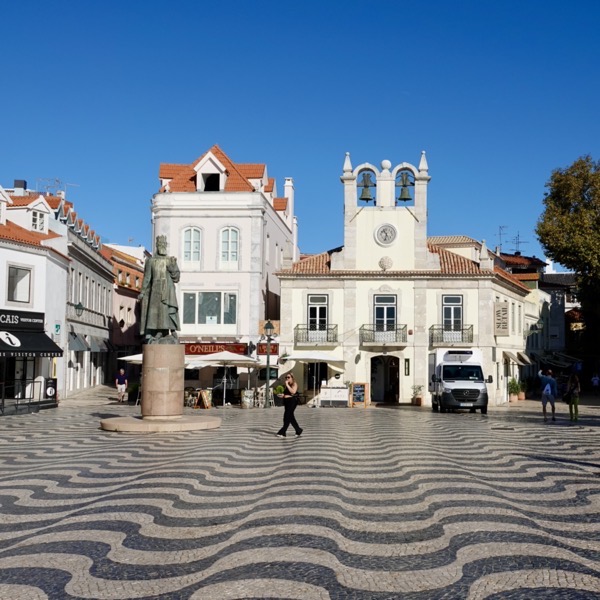

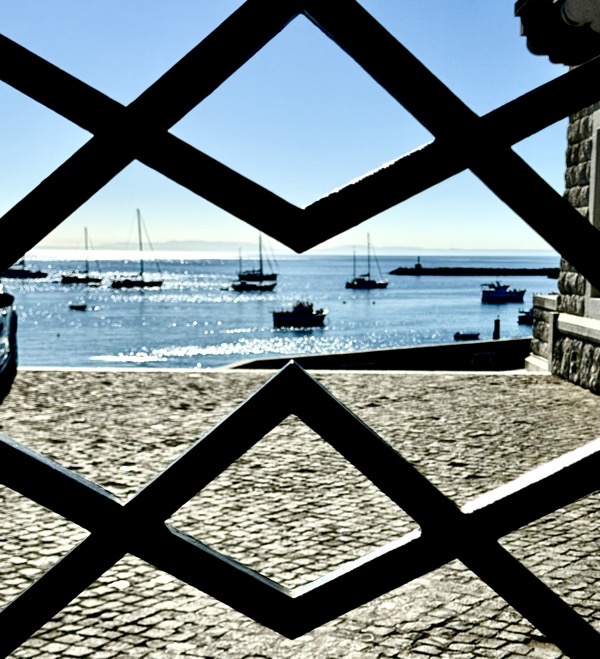
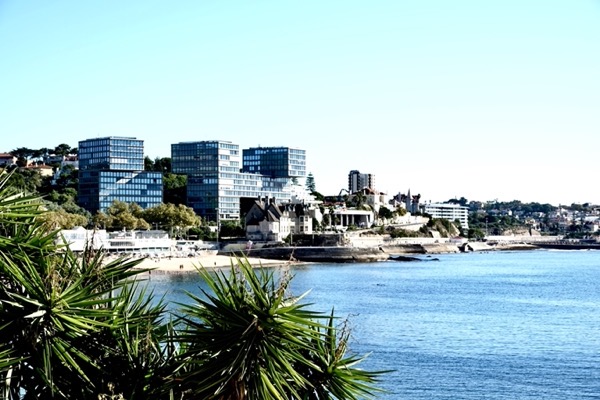
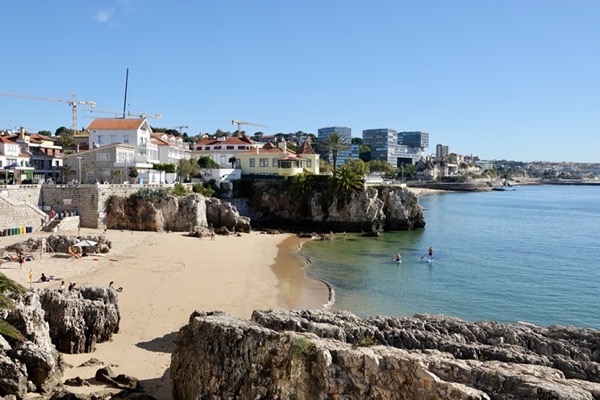
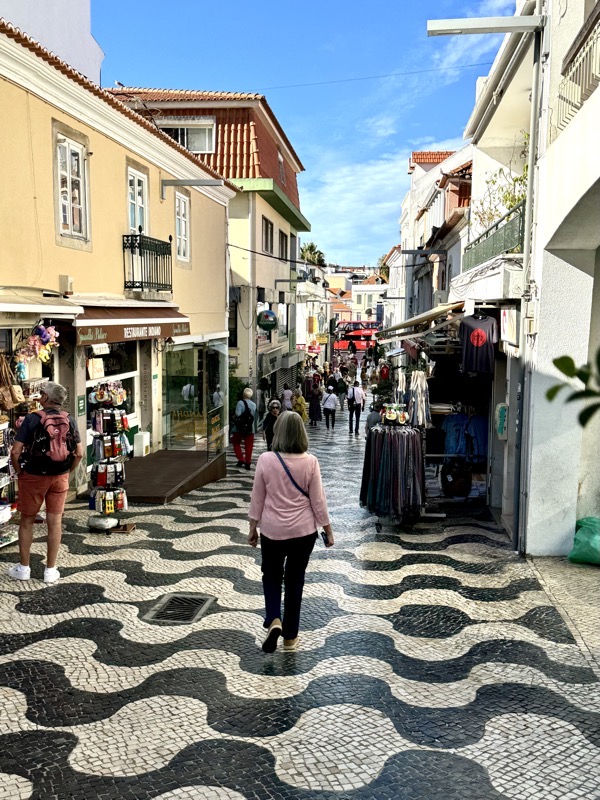

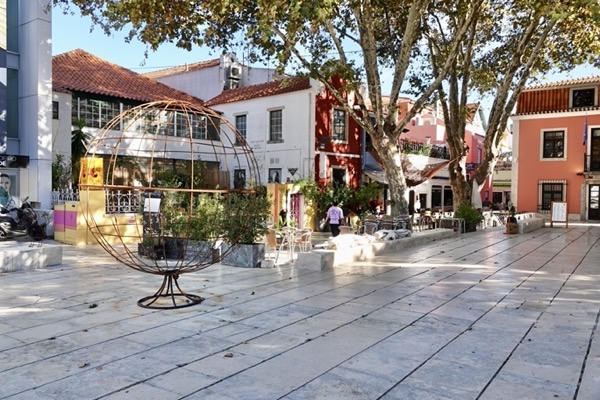
After leaving Cascais, the bus took a scenic coastal route along the Portuguese Riviera, passing through a stretch of the Sintra-Cascais Natural Park. Eventually, we turned inland, but in Sintra, due to heavy traffic, we disembarked and continued on foot to our destination, the National Palace of Sintra. The ride and walk offered lovely views of the charming town, with occasional glimpses of an impressive fortress perched atop a nearby mountain.
—— Portuguese Coastline ——
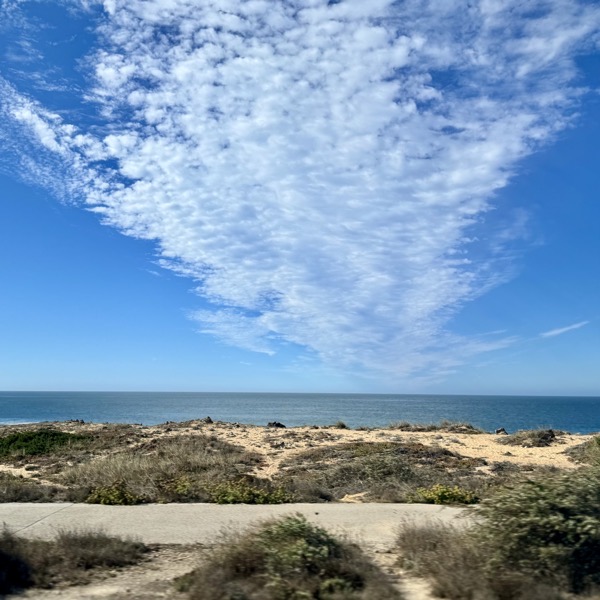
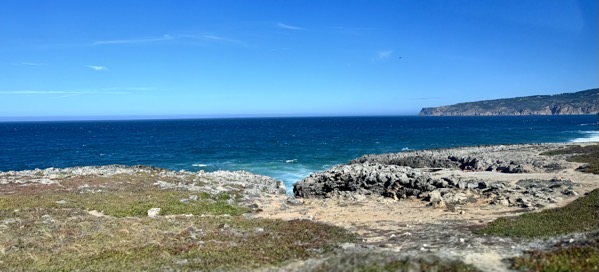
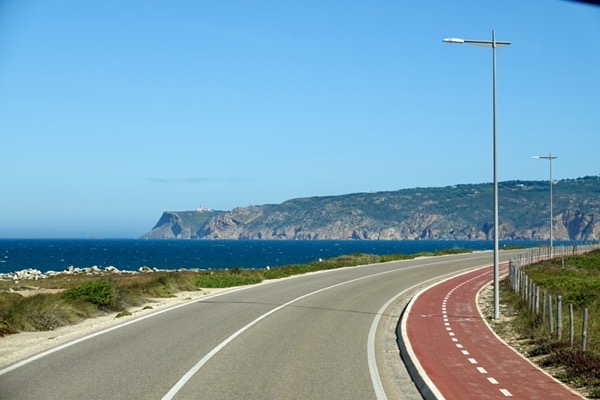

—— Entering Sintra ——
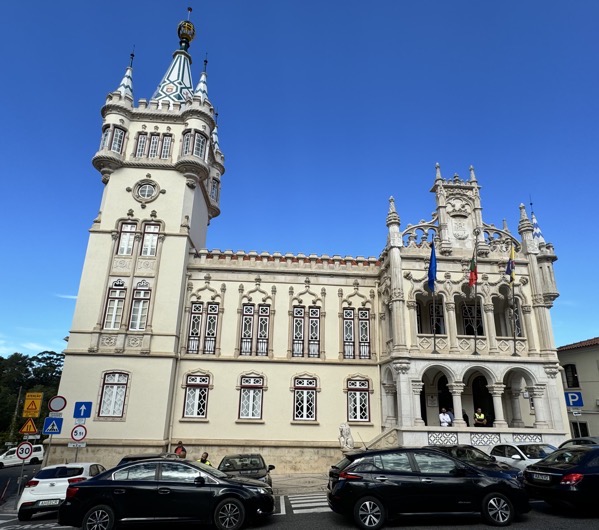
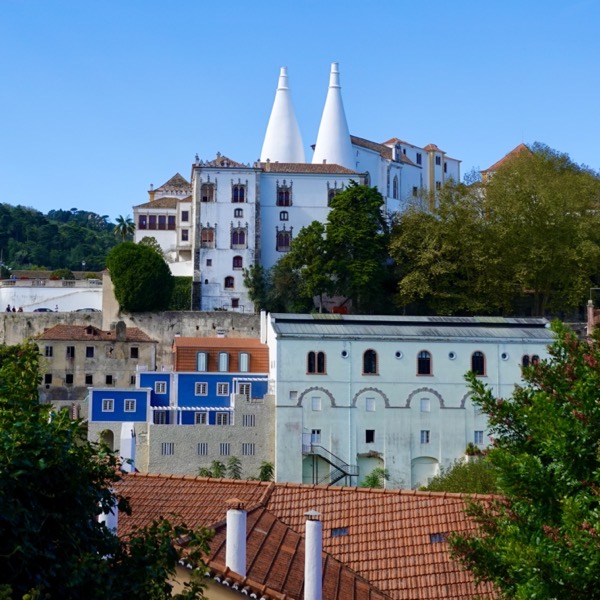
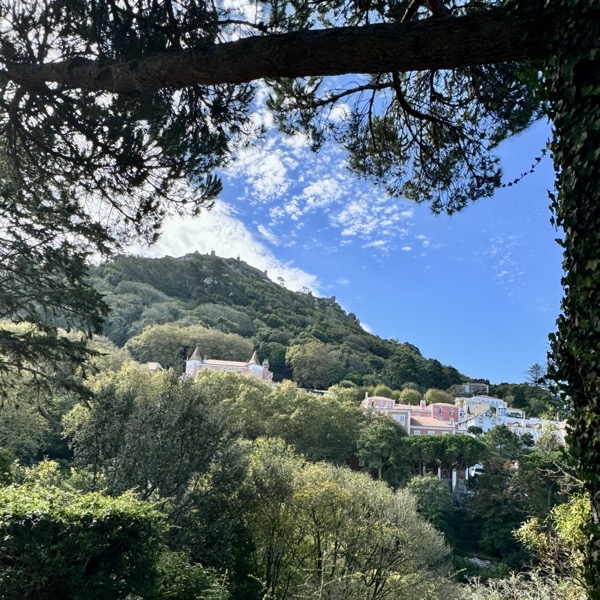
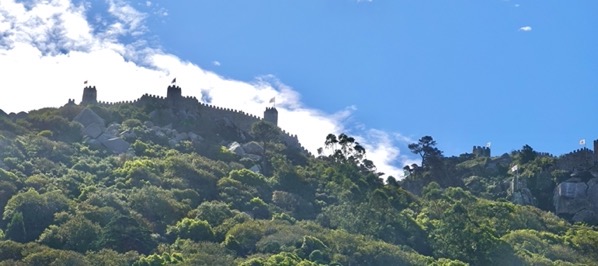
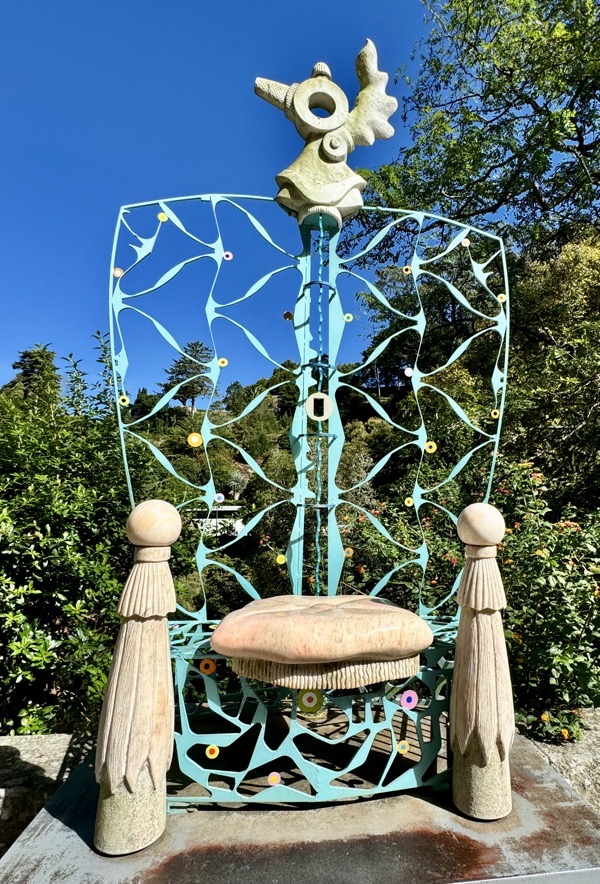
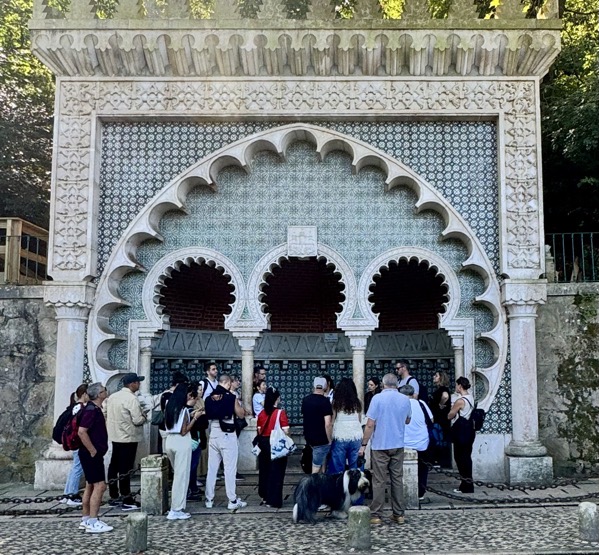

We entered the National Palace of Sintra from a lively, picturesque square. Construction of the palace began in the 10th century during the Moorish period, with significant expansions in the 15th and 16th centuries, especially under the reign of King João I. Renowned for its distinctive twin chimneys and ornate interiors, the palace served as a royal residence for centuries, blending Gothic, Manueline, Moorish, and Renaissance architectural styles. Its rich history and stunning surroundings make it one of Portugal’s most iconic landmarks. Our Smithsonian guide led us through captivating, one-of-a-kind rooms, each showcasing mesmerizing displays of intricate tiles, elegant furniture, interesting paintings, and unusal decor.
—— National Palace of Sintra ——
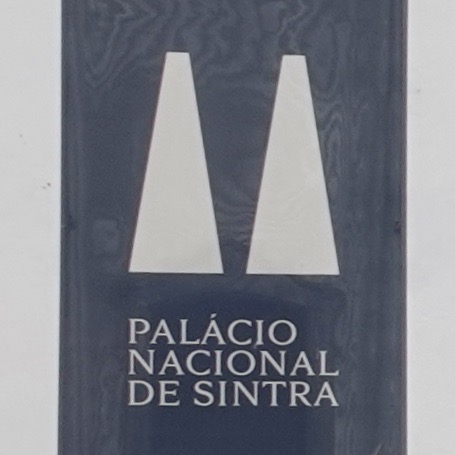
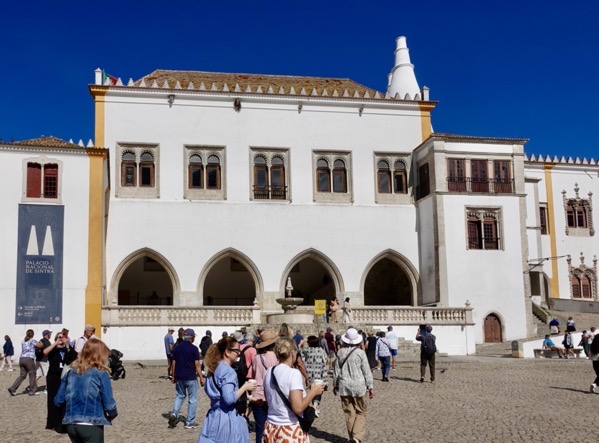
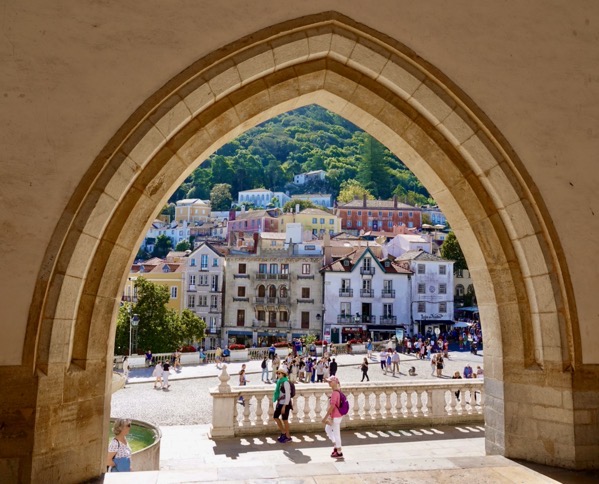
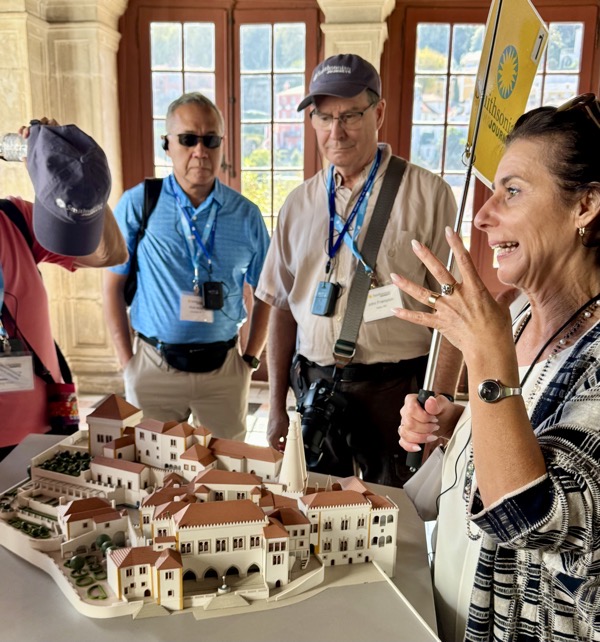
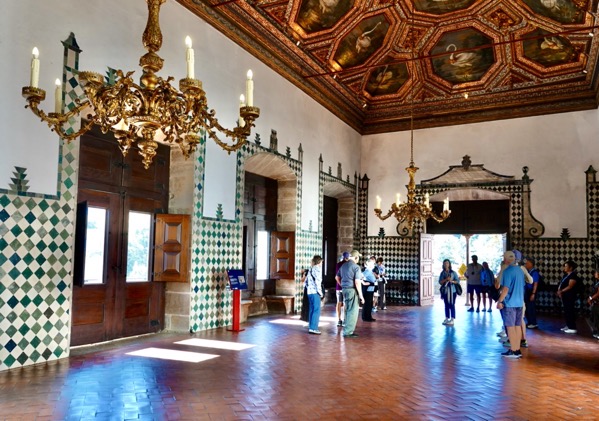
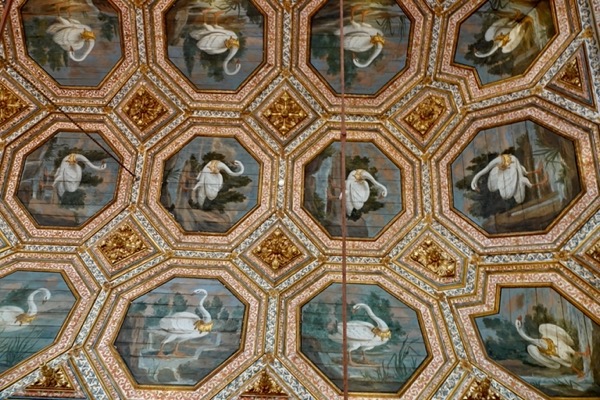
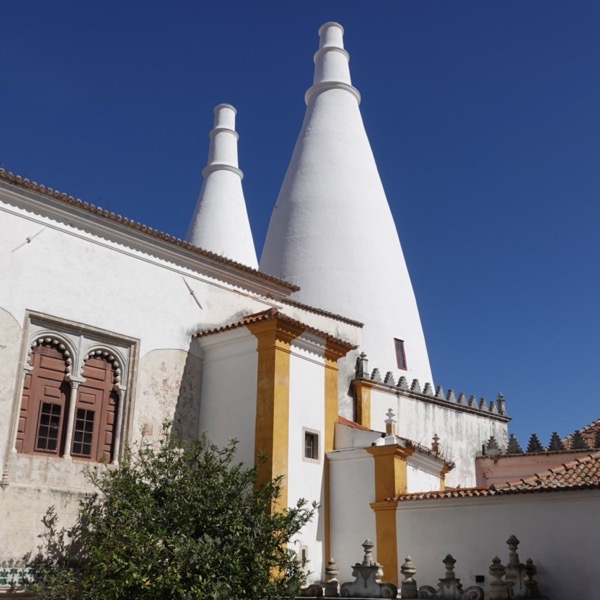
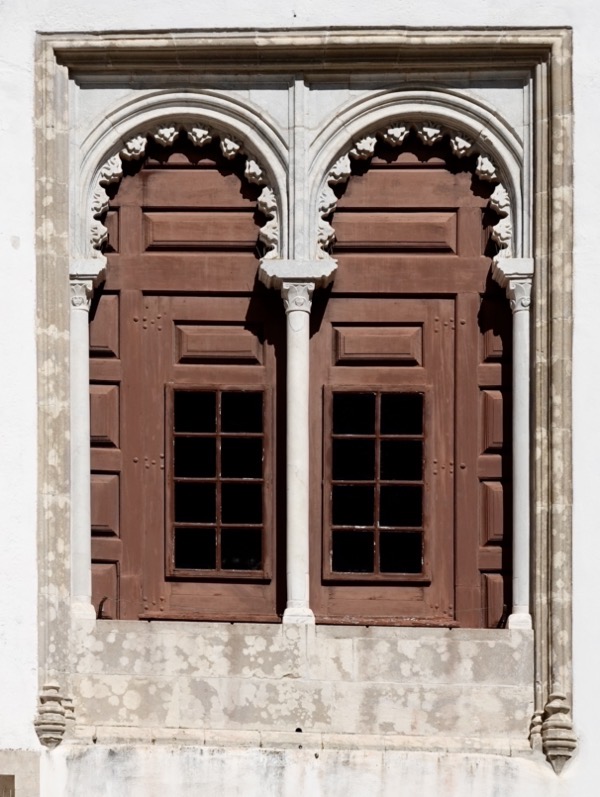




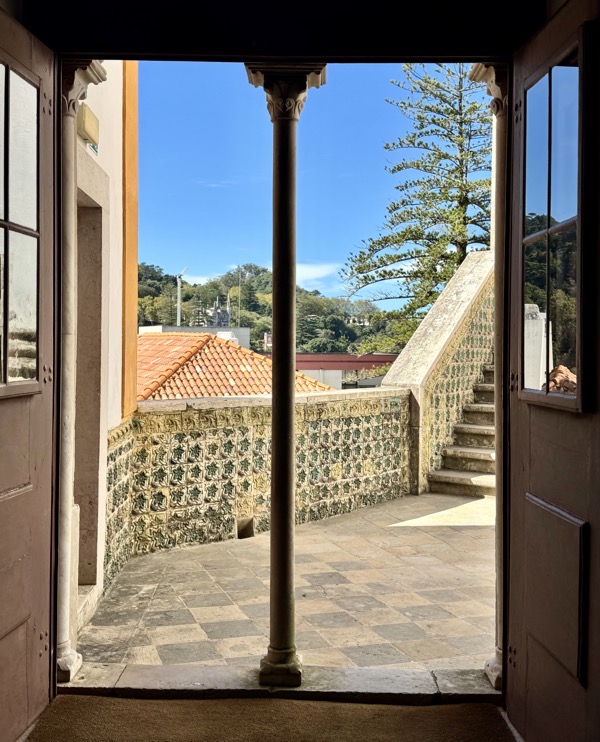
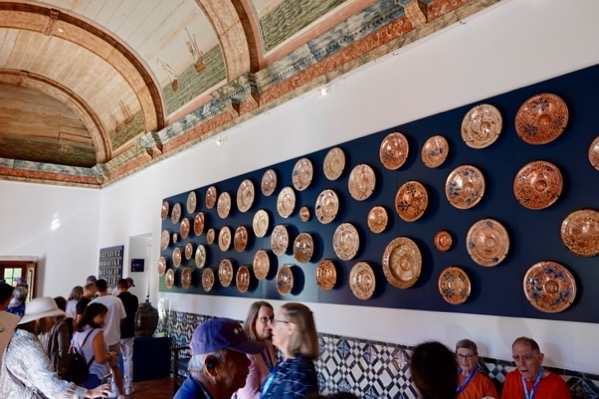
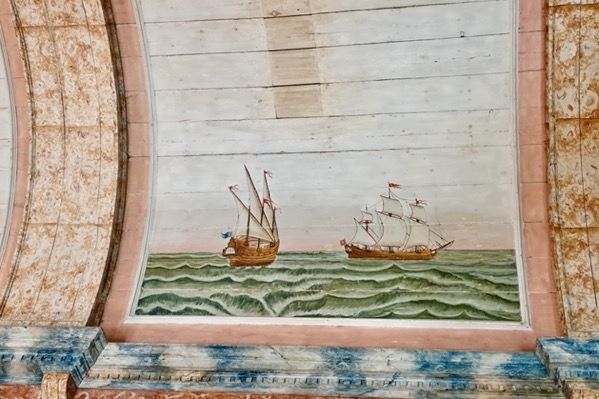

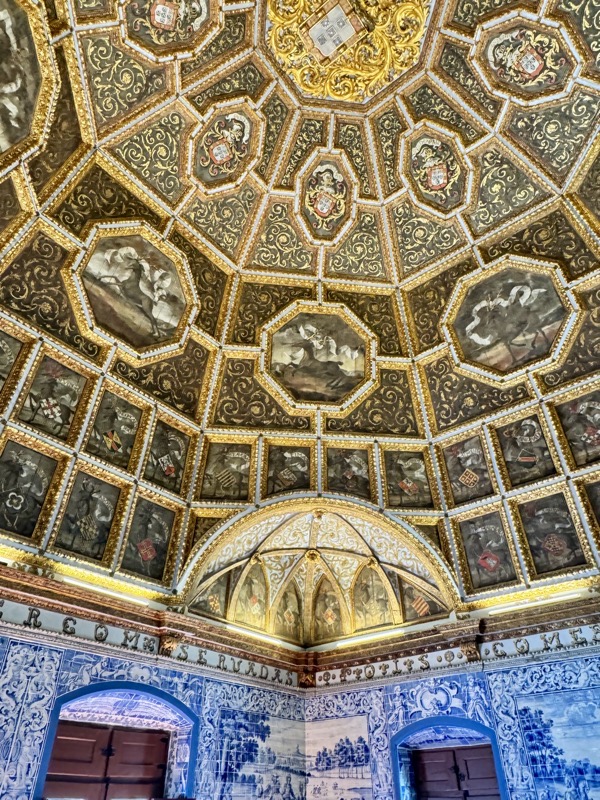
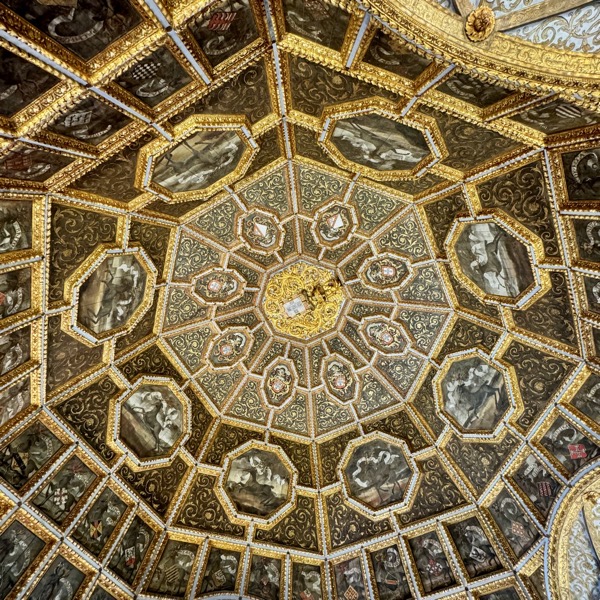
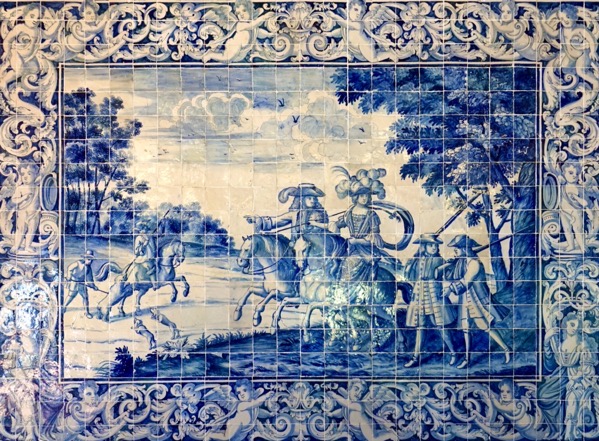
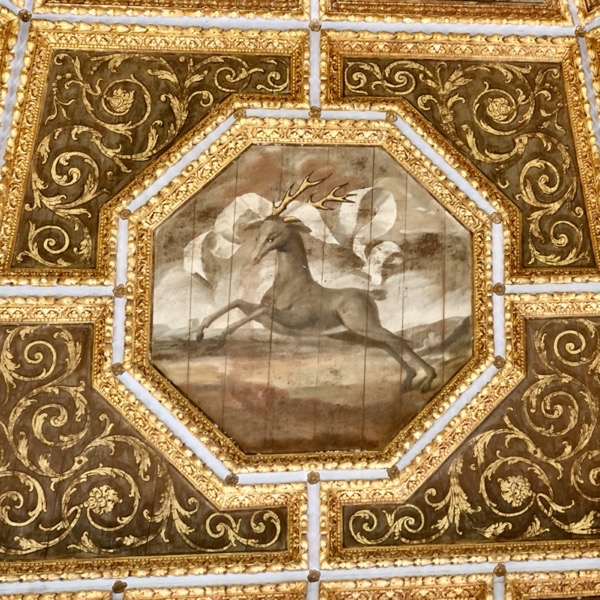
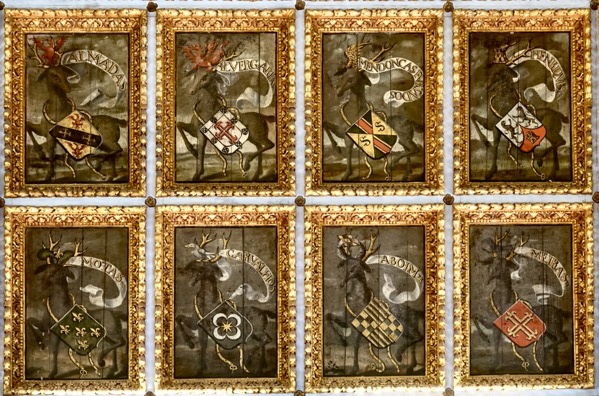
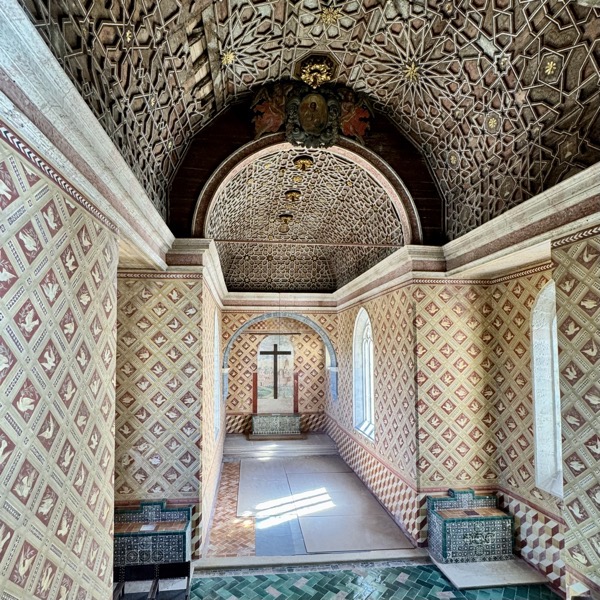
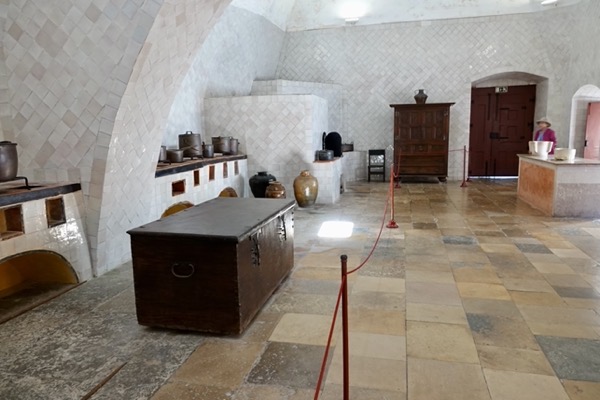
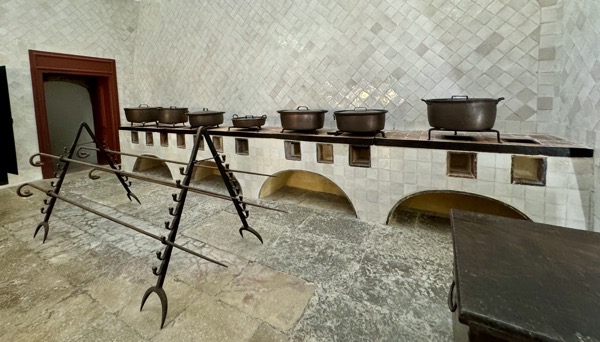

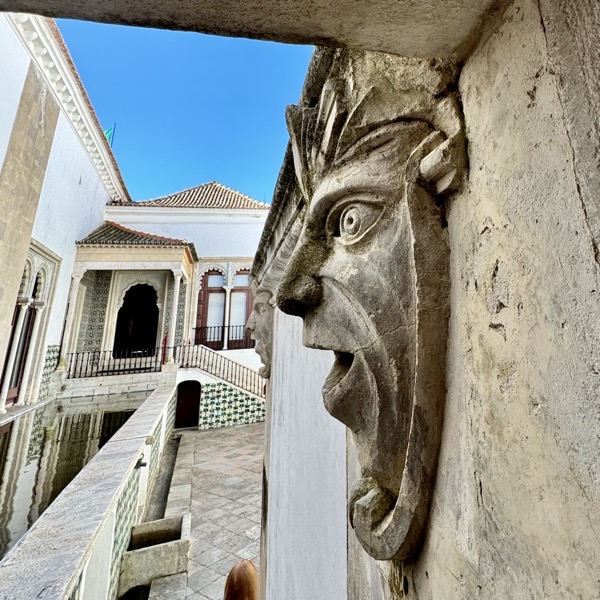
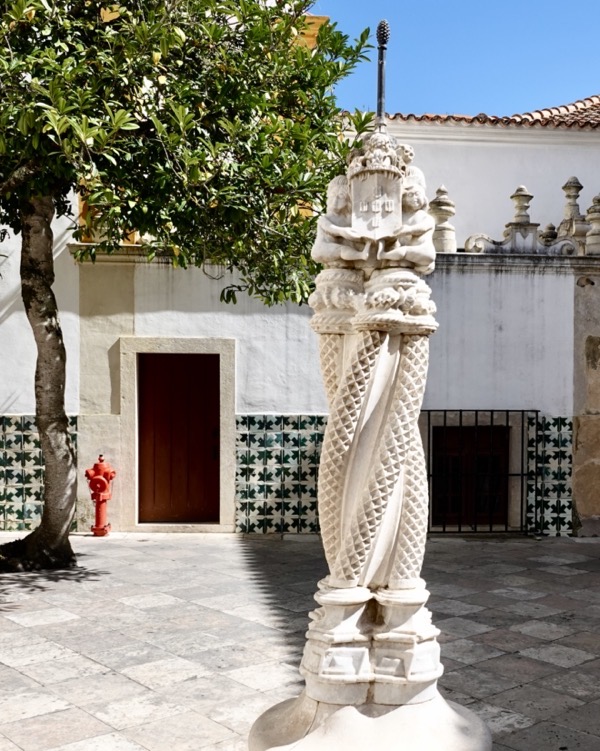
After our palace tour, the entire Smithsonian group gathered at a nearby restaurant. The atmosphere was lively and cheerful as we indulged in bread, pea soup, fish, oven-baked potatoes, apple crumble with vanilla coulis, and as much wine as we could manage.
After lunch, we were given about an hour to explore Sintra on our own. Nancy and Jane began browsing nearby shops, while John and I set off at a quicker pace. As we walked through a bustling commercial area, we noticed a crowd gathered around a man lying on the sidewalk. As we got closer, we saw a woman performing CPR on the man, whose face had turned a bluish hue. John quickly handed me his jacket and bag, and without hesitation, he knelt beside the woman to assist with CPR, giving her a much-needed break. Soon, we heard the sound of an ambulance siren slowly making its way through the crowd. When it finally arrived, John handed the patient over to the paramedics. We never heard any further updates but could only hope for a positive outcome. As we left the scene, John mentioned that while he had performed CPR in the Cath Lab where he works, this was the first time he had been required to do so in a public setting.
Soon after, we rejoined our wives. Jane and I treated ourselves to ginjinha served in a chocolate cup before reboarding the bus and heading back to the Dom Pedro Hotel.
—— Lunch & Ginjinha ——
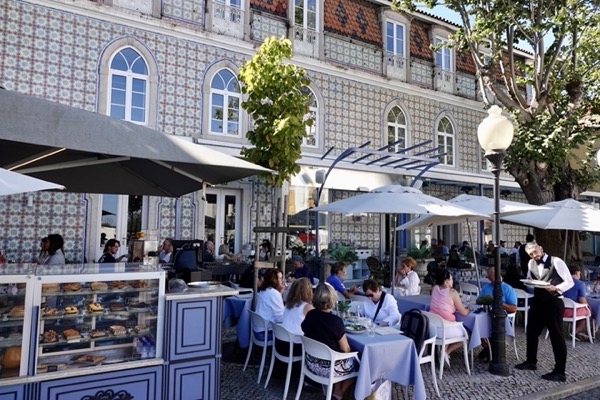
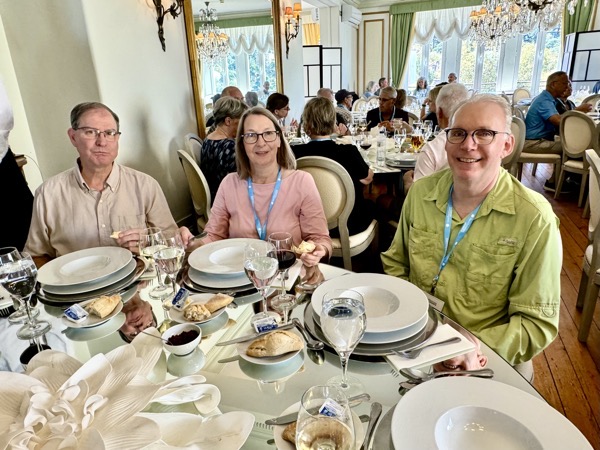
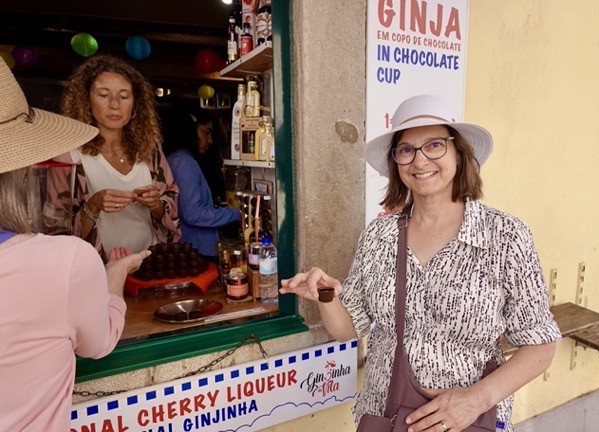
After returning to the Dom Pedro, Jane, John, and I crossed the street to the Amoreiras shopping center to pick up snacks for a light dinner—cheese, toasted bread “crackers,” olives, beer, and more. At 5:30 p.m., after a brief rest in our rooms, we headed downstairs for an enriching lecture on “Contemporary Portugal” by a local expert. Afterwards, we gathered in our room (907) for “dinner” and not long after began packing for our early departure from Lisbon the next morning. Jane and I capped off the evening by enjoying a beautiful sunset view from the window as we prepared to retire for the night.
—— Evening Lecture and Sunset ——
